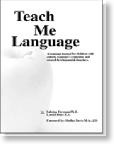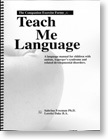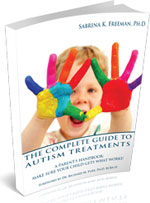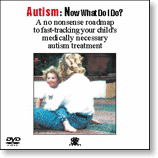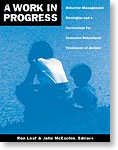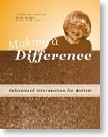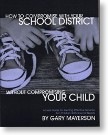science
A New Animal Study Shows Autism Reversal May Be Possible
27/02/13 12:03 Filed in: autism
A recent issue of Nature, a very well respected neuroscience journal, just devoted an entire issue to autism. That in itself makes me happy, since talented scientists are finally working on a severe condition which so significantly affects every afflicted family.
This edition of Nature is significant insofar as it has an article on the reversal of autism in mice.
Researchers first had to create autism in mice by knocking out a specific gene. They then administered medication to reverse the damage. The fact we are even seeing this kind of sophisticated research after decades of pseudo-science is very exciting! It’s the sort of thing we could only dream about not long ago.
Although the drugs used in this study are currently inappropriate for humans, the fact that they’re even talking about drug reversal of autism suggests that one day, there may be a drug that significantly ameliorates the condition of autism or perhaps eliminates it entirely.
This edition of Nature is significant insofar as it has an article on the reversal of autism in mice.
Researchers first had to create autism in mice by knocking out a specific gene. They then administered medication to reverse the damage. The fact we are even seeing this kind of sophisticated research after decades of pseudo-science is very exciting! It’s the sort of thing we could only dream about not long ago.
Although the drugs used in this study are currently inappropriate for humans, the fact that they’re even talking about drug reversal of autism suggests that one day, there may be a drug that significantly ameliorates the condition of autism or perhaps eliminates it entirely.
Why the Canadian Government Can’t Run a Hot Dog Stand at a Baseball Game!
01/11/12 09:38 Filed in: autism | Asperger's Syndrome
The Canadian Government made an announcement today (November 8th) that is purportedly significant. On closer inspection, I don’t see anything about which to get excited.
After a bunch of lawsuits, a public relations embarrassment that lead to the creation of a national website in the early 2000s, finally with the help of a turncoat MP who sold out the entire autism community while his son received science-based treatment, the Canadian government has announced the creation of a academic chair in autism. What is the expertise of the person who is going to fill the chair? Is it someone who is on the cutting edge of treatment research? Is it a researcher who is pushing the envelope when it comes to adding to the body of knowledge in the one area that has the most data, applied behavior analysis? No.
The person whose expertise is supposedly promising that it merits an academic chair is Jonathan Weiss, Ph.D, an assistant professor at York University. The website indicates the following as areas of specialty for Weiss:
Why should we be surprised? This chair is supported by The Canadian Institutes of Health Research (CIHR). This is the Government of Canada's health research investment agency and the same folks who fought against families in the landmark Auton Case at the Supreme Court of Canada. The CIHR claims that it’s mission is to “create new scientific knowledge and to enable its translation into improved health, more effective health services and products, and a strengthened Canadian health care system.”
In fact, based on this choice for this academic Chair, one could argue that the CIHR’s true mission appears to be to make sure that academics in Canada don’t actually come up with innovative treatments because then the government would have to pay for them. Instead, they agree to have researchers who are not going to be innovative for children who really need it, but rather, study us, the parents, because that’s far easier.
After a bunch of lawsuits, a public relations embarrassment that lead to the creation of a national website in the early 2000s, finally with the help of a turncoat MP who sold out the entire autism community while his son received science-based treatment, the Canadian government has announced the creation of a academic chair in autism. What is the expertise of the person who is going to fill the chair? Is it someone who is on the cutting edge of treatment research? Is it a researcher who is pushing the envelope when it comes to adding to the body of knowledge in the one area that has the most data, applied behavior analysis? No.
The person whose expertise is supposedly promising that it merits an academic chair is Jonathan Weiss, Ph.D, an assistant professor at York University. The website indicates the following as areas of specialty for Weiss:
- Families in distress,
- Asperger's and "cognitive therapy"
- How to teach graduate students this area of expertise,
- Caregiver's perspectives when failure has occurred and the kid winds up in the hospital.
Why should we be surprised? This chair is supported by The Canadian Institutes of Health Research (CIHR). This is the Government of Canada's health research investment agency and the same folks who fought against families in the landmark Auton Case at the Supreme Court of Canada. The CIHR claims that it’s mission is to “create new scientific knowledge and to enable its translation into improved health, more effective health services and products, and a strengthened Canadian health care system.”
In fact, based on this choice for this academic Chair, one could argue that the CIHR’s true mission appears to be to make sure that academics in Canada don’t actually come up with innovative treatments because then the government would have to pay for them. Instead, they agree to have researchers who are not going to be innovative for children who really need it, but rather, study us, the parents, because that’s far easier.
Music Therapy: Discordant Noise on the Internet
12/09/12 14:42 Filed in: autism | Asperger's Syndrome
Information on music and autism abounds on the Internet. There is even a certification board for Music Therapists. That association has a rubric for autism. Autism Speaks (who should know a thing or two about science) is also getting into the act and creating legitimacy for Music Therapy by featuring a guest blogger who is involved in Music Therapy.
Ever the optimist, I thought there may be new research that perhaps I had missed amongst the usual noise on autism and Music Therapy. So I went to the American Music Therapy Association (AMTA) music therapy fact sheets & bibliograpies, in search of what they have on the topic.
This is what I found:
“The literature reports that most individuals with ASD respond positively to music. People with ASD often show a heightened interest and response to music, making it an excellent therapeutic tool for working with them.”
This reminds me of the Psychic Network infomercials of a few years ago: “Trust us, we’re for real!”
Now, please, don’t get the wrong idea. I’ve blogged about the value of music (“The Role of Music” Part 1 and Part 2) and how helpful it is for integration, employment, and enjoyment for people with autism; however, that is very different from the so-called autism intervention of Music Therapy.
In short, once again we need to remind Music Therapy advocates that for the broader community to take you seriously, please Show us the data!
Until such time, we should not be calling any activity involving music and people afflicted with autism, “therapy.”
Aside from what we know is established in the science, I’ve recently written about a preliminary bright spot in research on music - the targeting of non-verbal children with autism. However, this should not be confused with the fashion de jour Music Therapy that is being offered. This new area of research is experimental and developing in the field of Neurology. Hopefully, more evidence will soon be collected regarding these experimental techniques and non-verbal children with autism will hopefully have an effective treatment for speech impairment at some point in the future.
Ever the optimist, I thought there may be new research that perhaps I had missed amongst the usual noise on autism and Music Therapy. So I went to the American Music Therapy Association (AMTA) music therapy fact sheets & bibliograpies, in search of what they have on the topic.
This is what I found:
“The literature reports that most individuals with ASD respond positively to music. People with ASD often show a heightened interest and response to music, making it an excellent therapeutic tool for working with them.”
This reminds me of the Psychic Network infomercials of a few years ago: “Trust us, we’re for real!”
Now, please, don’t get the wrong idea. I’ve blogged about the value of music (“The Role of Music” Part 1 and Part 2) and how helpful it is for integration, employment, and enjoyment for people with autism; however, that is very different from the so-called autism intervention of Music Therapy.
In short, once again we need to remind Music Therapy advocates that for the broader community to take you seriously, please Show us the data!
Until such time, we should not be calling any activity involving music and people afflicted with autism, “therapy.”
Aside from what we know is established in the science, I’ve recently written about a preliminary bright spot in research on music - the targeting of non-verbal children with autism. However, this should not be confused with the fashion de jour Music Therapy that is being offered. This new area of research is experimental and developing in the field of Neurology. Hopefully, more evidence will soon be collected regarding these experimental techniques and non-verbal children with autism will hopefully have an effective treatment for speech impairment at some point in the future.
Autism Conferences: Proceed with Caution
25/05/12 09:35 Filed in: autism | Asperger's Syndrome
Some parts of the autism world appear to be exhilarated about the latest International Meeting for Autism Research (IMFAR) conference in Toronto, where researchers from all over the world presented their findings at the May meeting. In the past, scientists would get together to lecture on ideas and present preliminary results. Every participant understood, though, that one’s presentation is given before all scientific peers have had a chance to closely scrutinize the findings. The rubber meets the road only after blind reviewers in the field have scrutinized the proposed article.
At the recent IMFAR conference, we apparently now have people with Asperger’s syndrome and parents joining in the “festivities.” Based on the amount of hoopla generated by this conference, it appears as though the fundamental precept regarding how science progresses has been lost on many participants at the conference.
We need to understand that there can be no short cuts when it comes to the scientific method. Circumventing the process of science helps purveyors of quackery and hurts people with autism in the long run. As difficult as may be, we need to be patient and let reputable scientists do their job.
It’s fine to have some fun at an IMFAR conference, but remember, until findings are published in a peer-reviewed journal and clinical trials have been completed, the purported “findings” from an event like the International Meeting for Autism Research, are merely preliminary, at best. Proceed with caution.
At the recent IMFAR conference, we apparently now have people with Asperger’s syndrome and parents joining in the “festivities.” Based on the amount of hoopla generated by this conference, it appears as though the fundamental precept regarding how science progresses has been lost on many participants at the conference.
We need to understand that there can be no short cuts when it comes to the scientific method. Circumventing the process of science helps purveyors of quackery and hurts people with autism in the long run. As difficult as may be, we need to be patient and let reputable scientists do their job.
It’s fine to have some fun at an IMFAR conference, but remember, until findings are published in a peer-reviewed journal and clinical trials have been completed, the purported “findings” from an event like the International Meeting for Autism Research, are merely preliminary, at best. Proceed with caution.
Does Floortime Therapy Work? We're still waiting for the evidence.
16/04/12 15:42 Filed in: autism | Asperger's Syndrome
I’ve been reading about Floortime/DIR Autism Therapy for the last twenty years and have also written about this topic at length before. The theory behind this form of “play” therapy always sounded compelling because it appears to mesh well with a very nurturant style of child-rearing. Unfortunately, during the last two decades, there has been very little in the way of scientific testing to support the purported efficacy of this method. Although there have been many dozens of uncontrolled studies, Floortime Therapy has never been subjected to the rigor of science, much to the frustration of adherents to the scientific method.
Finally, in 2011, there was an attempt to add scientific rigor to the testing of Floortime autism treatment. Recently, the Canadian Broadcasting Corporation (CBC) showcased Floortime Therapy and the purported science supporting the therapy.
I watched with great interest as a professor from York University was interviewed regarding this so-called “break through” in autism treatment. I took down the name of the researcher and started to look for the peer-reviewed journal article created by this researcher from a legitimate university. I couldn’t find a 2012 study, so I wrote to the research center and they kindly sent me the latest article, which was actually a 2011 article that I had already read. In the 2011 study I received, there was no report of the brain scans that were highlighted in the CBC news clip. When I contacted the research center, I was told that the information on the brain scans had not yet been published.
Since there has been so much publicity regarding this latest article, I’ve decided to present a short analysis on the 2011 Floortime study conducted by Casenhiser, Shanker and Stieben.
The article’s strengths:
The article’s weaknesses as described by the researchers involved in the study:
Additional Weaknesses:
The central weakness of the 2011 study:
Bottom Line: Based on the studies that have been conducted to this point on Floortime, there is no evidence to suggest that Floortime is an effective treatment for autism.
We eagerly await the solid evidence!
Finally, in 2011, there was an attempt to add scientific rigor to the testing of Floortime autism treatment. Recently, the Canadian Broadcasting Corporation (CBC) showcased Floortime Therapy and the purported science supporting the therapy.
I watched with great interest as a professor from York University was interviewed regarding this so-called “break through” in autism treatment. I took down the name of the researcher and started to look for the peer-reviewed journal article created by this researcher from a legitimate university. I couldn’t find a 2012 study, so I wrote to the research center and they kindly sent me the latest article, which was actually a 2011 article that I had already read. In the 2011 study I received, there was no report of the brain scans that were highlighted in the CBC news clip. When I contacted the research center, I was told that the information on the brain scans had not yet been published.
Since there has been so much publicity regarding this latest article, I’ve decided to present a short analysis on the 2011 Floortime study conducted by Casenhiser, Shanker and Stieben.
The article’s strengths:
- They recruit fifty-one children for their study, which is a relatively large number in autism research.
- There are two groups of children (an experimental and control group).
- They attempt to randomly assign children so that both groups would be similar prior to the treatment being administered.
- The authors very honestly describe the limitations of the study, instead of attempting to hide them (which is so often the case in autism treatment research).
The article’s weaknesses as described by the researchers involved in the study:
- The control group receives a large number of different treatments in a completely uncontrolled fashion.
- The experimental group receives more hours of treatment than the control group (which is, in my view, a fatal flaw since the variable “intensity” is not controlled).
- There is no I.Q. testing conducted prior to and after the study. I define this as a major flaw since it is crucial to understand whether or not treatment would affect the cognitive skills of a child with a developmental delay or disorder.
- There is a severe self-selection bias, not only regarding which families sign up for the study but more importantly, which children drop out of the study to gain access to a 20-30 hour a week government program (13 children from the control group and 9 children from the experimental group). Even the authors understand how problematic this is when they state: “The authors, therefore, caution against drawing the conclusion that a 20 hours per week program (such as the Intensive Behavioral Intervention program funded by the government of Ontario) can be easily replaced with a 2 hours per week program without regard for how well the requirements of the program fit the needs and resources of each family)” p. 18
Additional Weaknesses:
- The researchers in the Learning Through Interaction in Children with Autism 2011 study use the wrong control group; they need to compare Floortime with a control group that is receiving what is considered “best practices” for autism, which is currently Intensive Behavioral Treatment.
- In this study, children were not diagnosed with autism by a specific psychologist with expertise in autism. Researchers rely on diagnoses made prior to the study from a heterogeneous group of clinicians. This is a severe flaw because we do not know the quality and accuracy of those diagnoses. Since autism is a spectrum disorder, one clinician’s Asperger Syndrome diagnosis may be equal to another clinician’s Autism diagnosis.
- Tools used to measure improvements in the study were developed by the original proponents of the therapy. Using subjective measures to indicate whether a treatment is successful is forbidden in science. The tools used to discern improvement must be independently developed and tested prior to their use in an experiment. There was only one objective measure developed from the field of Speech and Language Pathology. There must be more objective measures in general, and from the area of Speech and Language specifically (and even this one objective measure did not yield a difference between the experimental and control group).
The central weakness of the 2011 study:
- Due to an attrition rate of 43% of the children from the study, we have no way of knowing whether the more severe children left the study to be provided Intensive Behavioral Treatment. It has been my observation over the years that parents of children whose autism is more severe tend to gravitate towards programs that are highly behavioral in nature, since such programs tend to provide better results more quickly. Did the abandonment of the Floortime study by these parents result in a biased group of mildly affected children remaining in the Floortime study? We don’t know; however, we do know that this study has so many limitations that it provides no evidence whatsoever that Floortime Therapy is effective. The fact that almost half of the subjects at the beginning of the study were not there at the end, should disqualify the entire effort for any serious scientist or public policy official.
Bottom Line: Based on the studies that have been conducted to this point on Floortime, there is no evidence to suggest that Floortime is an effective treatment for autism.
We eagerly await the solid evidence!
Groundhog Day the Movie, Extended Autism Edition
15/03/12 15:32 Filed in: autism | Asperger's Syndrome
Every morning, I arrive at my computer hoping to read something new and hopefully uplifting about autism. More often than not, recurring themes play out day after day, year after year. Perhaps this is one of the side effects of being introduced to the world of autism over twenty years ago.
Unfortunately, the tragedies seem to never end. The most common and horrendous is where a parent takes their life and the life of their autistic child because they’d rather be dead than continue with the unbearable nature of this life. Last week was no exception. The latest autism related suicide/murder occurred in the San Francisco Bay Area.
At about the same time, a typical media feel-good story was publicized, this time about Savantism. Most often the type of talent showcased is music. In this case, it was about a singer with autism. We’re all supposed to suddenly feel good that this one person’s talents have finally been recognized. Although the singer should be applauded, it is troubling that it takes so long for those around him to recognize his skills and work with him on developing them further. He was three years old when he was diagnosed with autism. How could it have possibly taken 23 years to recognize his abilities?
The next popular news story typically concerns a high functioning person with autism (who actually may have Asperger’s Syndrome) being showcased as a representative for all people with autism. Last week, the representative with autism media chose to highlight is Dr. Temple Grandin. She is once again in the news, giving insight from her life to parents of children with autism. Whether a person who is as accomplished as Dr. Grandin can accurately represent all people with autism is never questioned, since that would be unseemly; however, it is always in the minds of parents whose children are severely afflicted with the disorder, insofar as their child is light years apart from a Dr. Grandin level of functioning.
Another theme that is endlessly rehashed with every newly minted media reporter is the “blame the parent” theory. There are several varieties of this meme. The theories morph from blame the mother, to blame the father, to finally blame the pair-bonding process wherein parents of children with autism apparently self-select each other and thereby create children with autism. Although these tired theories continue to bore us as they are introduced anew, they always remain offensive in nature, with each new crop of reporters that resurrect them.
A relatively recent autism theme that is introduced repeatedly, seemingly week after week, is autism segregation under the banner of compassion. The latest story is about special religious services for children who are too disruptive to attend regular services. We’re all supposed to feel warm and fuzzy about this segregation rather than incensed that 1) our community cannot be more tolerant of disability and accommodative, and 2) that no one is working with these kids to teach them the skills they need to be able to attend a regular service.
It would be great to wake up one fine morning and read about a genuine breakthrough in autism treatment, or even a scientifically backed cure! It would be wonderful to never hear of another autism murder/suicide or more pap from green horn reporters about “newly discovered” discredited therapies, but I don’t hold my breath. We parents of children with autism are seemingly forever in Groundhog Day the Movie, Extended Autism Edition.
Unfortunately, the tragedies seem to never end. The most common and horrendous is where a parent takes their life and the life of their autistic child because they’d rather be dead than continue with the unbearable nature of this life. Last week was no exception. The latest autism related suicide/murder occurred in the San Francisco Bay Area.
At about the same time, a typical media feel-good story was publicized, this time about Savantism. Most often the type of talent showcased is music. In this case, it was about a singer with autism. We’re all supposed to suddenly feel good that this one person’s talents have finally been recognized. Although the singer should be applauded, it is troubling that it takes so long for those around him to recognize his skills and work with him on developing them further. He was three years old when he was diagnosed with autism. How could it have possibly taken 23 years to recognize his abilities?
The next popular news story typically concerns a high functioning person with autism (who actually may have Asperger’s Syndrome) being showcased as a representative for all people with autism. Last week, the representative with autism media chose to highlight is Dr. Temple Grandin. She is once again in the news, giving insight from her life to parents of children with autism. Whether a person who is as accomplished as Dr. Grandin can accurately represent all people with autism is never questioned, since that would be unseemly; however, it is always in the minds of parents whose children are severely afflicted with the disorder, insofar as their child is light years apart from a Dr. Grandin level of functioning.
Another theme that is endlessly rehashed with every newly minted media reporter is the “blame the parent” theory. There are several varieties of this meme. The theories morph from blame the mother, to blame the father, to finally blame the pair-bonding process wherein parents of children with autism apparently self-select each other and thereby create children with autism. Although these tired theories continue to bore us as they are introduced anew, they always remain offensive in nature, with each new crop of reporters that resurrect them.
A relatively recent autism theme that is introduced repeatedly, seemingly week after week, is autism segregation under the banner of compassion. The latest story is about special religious services for children who are too disruptive to attend regular services. We’re all supposed to feel warm and fuzzy about this segregation rather than incensed that 1) our community cannot be more tolerant of disability and accommodative, and 2) that no one is working with these kids to teach them the skills they need to be able to attend a regular service.
It would be great to wake up one fine morning and read about a genuine breakthrough in autism treatment, or even a scientifically backed cure! It would be wonderful to never hear of another autism murder/suicide or more pap from green horn reporters about “newly discovered” discredited therapies, but I don’t hold my breath. We parents of children with autism are seemingly forever in Groundhog Day the Movie, Extended Autism Edition.
The widely known “Secret” is being tested… Finally!
26/01/12 09:34 Filed in: autism | Asperger's Syndrome
For the past 20 years, parents of children with autism have been informally using melatonin to mitigate their children’s vexing sleep problems. A great side benefit to melatonin is that finally parents can get some sleep. Since a full night’s sleep is so precious and a majority of children with autism have disrupted sleep, some parents have become quite zealous in their support for this supplement. Many parents anecdotally report that their children, at long last, start to sleep through the night with the use of melatonin.
Those of us who believe in the scientific method, feel somewhat sheepish in recommending melatonin since it has never been tested properly on children with autism for sleep. The hormone melatonin is not proprietary; therefore, historically no drug company has had an incentive to do clinical trials. In addition, the anecdotes have been mixed. Melatonin seems to work with some children and not for others. Some parents use the sublingual variety of melatonin (under the tongue) whereas other parents manage to successfully use the time-release capsules, where the child must swallow the entire pill since by crushing it, the time release no longer works. In short, in Melatonin we have had a potential treatment for autism related sleep disorder but no one with an economic incentive to test it properly.
In the past five years, however, researchers have been examining the effect of melatonin on sleep and have reported mixed results. In April 2011, a research article was published reviewing 35 studies that looked at the relationship between melatonin and autism.
Their review found significant improvements in:
Clearly, we need more studies done on the relationship between sleep and melatonin in children afflicted with autism. The effect on night wakenings needs to be replicated in a controlled study to make sure that this observation is correct.
In the meantime, for those parents suffering from serious and prolonged sleep deprivation, it may be worthwhile to have the child’s pediatrician or neurologist read up on melatonin to see whether the supplement is worth exploring for your child. Since the article reviewing 35 studies reported minimal to no side effects for melatonin, it may be worthwhile to try melatonin under the supervision of the child’s health care professional.
Those of us who believe in the scientific method, feel somewhat sheepish in recommending melatonin since it has never been tested properly on children with autism for sleep. The hormone melatonin is not proprietary; therefore, historically no drug company has had an incentive to do clinical trials. In addition, the anecdotes have been mixed. Melatonin seems to work with some children and not for others. Some parents use the sublingual variety of melatonin (under the tongue) whereas other parents manage to successfully use the time-release capsules, where the child must swallow the entire pill since by crushing it, the time release no longer works. In short, in Melatonin we have had a potential treatment for autism related sleep disorder but no one with an economic incentive to test it properly.
In the past five years, however, researchers have been examining the effect of melatonin on sleep and have reported mixed results. In April 2011, a research article was published reviewing 35 studies that looked at the relationship between melatonin and autism.
Their review found significant improvements in:
- Sleep duration. Children with autism slept much longer using melatonin
- Sleep onset. Children with autism went to sleep faster using melatonin
- Night wakening. Researchers did not find a difference in number of night-time wakenings.
Clearly, we need more studies done on the relationship between sleep and melatonin in children afflicted with autism. The effect on night wakenings needs to be replicated in a controlled study to make sure that this observation is correct.
In the meantime, for those parents suffering from serious and prolonged sleep deprivation, it may be worthwhile to have the child’s pediatrician or neurologist read up on melatonin to see whether the supplement is worth exploring for your child. Since the article reviewing 35 studies reported minimal to no side effects for melatonin, it may be worthwhile to try melatonin under the supervision of the child’s health care professional.
We're Aware Already: Part Two
01/09/11 08:20 Filed in: autism | Asperger's Syndrome
After my first “We’re Aware Already!” post, I was sent a link from a reader letting me know that I was not the first person to have this reaction. In fact, the post I received is so “on the money,” that I received permission to repost, and here it is in its entirety. I should mention that the Association for Science in Autism Treatment is a very worthwhile group with a great newsletter. Subscribe for free: Click here to signup. Read more...
An Inconvenient Truth for Autism film: Third trailer available for viewing
28/08/11 19:58 Filed in: autism | Asperger's Syndrome
The organization, Medicare for Autism Now has just released its third trailer for the film Medicare’s Orphans. Watch the trailer...
Vaccines & Autism: Mistrust and the Public Health Dilemma
26/08/11 15:43 Filed in: autism | Asperger's Syndrome
What are free societies to do when citizens no longer trust their scientists? Thousands of parents are not vaccinating their children due to the fear that vaccines cause autism. Read more...
Is science coming back into fashion?
08/08/11 09:12 Filed in: autism | Asperger's Syndrome
The Summer 2011 issue of the Autism Spectrum News was just delivered to my doorstep with the leading story, titled, Use Science and the Scientific Method When Considering Treatment. In fact, the most of the issue is devoted to this goal, which is a refreshing change from what comes across my desk and through my e-mail on a daily basis. Read more...


